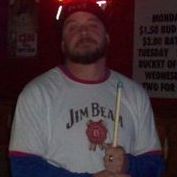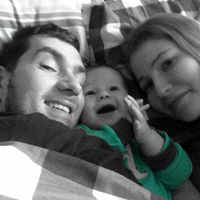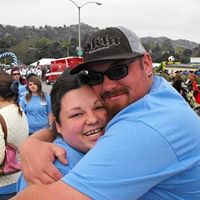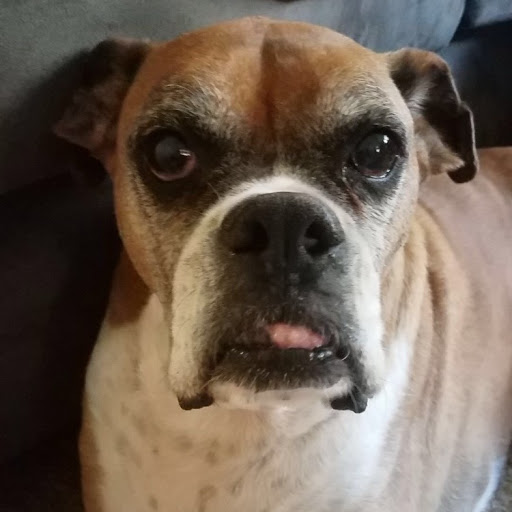Adam Lee Sanders
age ~33
from Fort Walton Beach, FL
- Also known as:
-
- Adam L Sanders
Adam Sanders Phones & Addresses
- Fort Walton Beach, FL
- 9415 Maple St, New Lothrop, MI 48460
- Saginaw, MI
Ranks
-
Licence:New Jersey - Active
-
Date:2013
Specialities
Property Management
License Records
Adam B Sanders
Phone:
(737)9321964
License #:
79750 - Expired
Category:
Apprentice Electrician
Expiration Date:
Sep 24, 2016
Lawyers & Attorneys

Adam Sanders - Lawyer
view sourceLicenses:
New Jersey - Active 2013

Adam Sanders - Lawyer
view sourceISLN:
1000901312
Admitted:
2020
University:
Monterey College of Law, Monterey CA

Adam Sanders - Lawyer
view sourceSpecialties:
Business
Banking
Corporate & Incorporation
Tax
Intellectual Property
Real Estate
Commercial
Banking
Corporate & Incorporation
Tax
Intellectual Property
Real Estate
Commercial
ISLN:
1000723682
Admitted:
2013
Us Patents
-
Framework And Method For Controlling A Robotic System Using A Distributed Computer Network
view source -
US Patent:20110071672, Mar 24, 2011
-
Filed:Sep 22, 2009
-
Appl. No.:12/564094
-
Inventors:Adam M. Sanders - Holly MI, US
Leandro G. Barajas - Troy MI, US
Frank Noble Permenter - Webster TX, US
Philip A. Strawser - Houston TX, US -
Assignee:GM GLOBAL TECHNOLOGY OPERATIONS, INC. - Detroit MI
The U.S.A. as Represented by the Administrator of the National Aeronautics and Space Aministration - Washington DC
Oceaneering International, Inc. - Houston TX -
International Classification:G06F 19/00
-
US Classification:700245
-
Abstract:A robotic system for performing an autonomous task includes a humanoid robot having a plurality of compliant robotic joints, actuators, and other integrated system devices that are controllable in response to control data from various control points, and having sensors for measuring feedback data at the control points. The system includes a multi-level distributed control framework (DCF) for controlling the integrated system components over multiple high-speed communication networks. The DCF has a plurality of first controllers each embedded in a respective one of the integrated system components, e.g., the robotic joints, a second controller coordinating the components via the first controllers, and a third controller for transmitting a signal commanding performance of the autonomous task to the second controller. The DCF virtually centralizes all of the control data and the feedback data in a single location to facilitate control of the robot across the multiple communication networks.
-
Interactive Robot Control System And Method Of Use
view source -
US Patent:20110071676, Mar 24, 2011
-
Filed:Sep 22, 2009
-
Appl. No.:12/564096
-
Inventors:Adam M. Sanders - Holly MI, US
Matthew J. Reiland - Oxford MI, US
Muhammad E. Abdallah - Houston TX, US
Douglas Martin Linn - White Lake MI, US
Robert Platt - Houston TX, US -
Assignee:GM GLOBAL TECHNOLOGY OPERATIONS, INC. - Detroit MI
The U.S.A As Represented by the Administrator of the National Aeronautics and space Administration - WASHINGTON DC -
International Classification:G05B 19/04
-
US Classification:700250
-
Abstract:A robotic system includes a robot having joints, actuators, and sensors, and a distributed controller. The controller includes command-level controller, embedded joint-level controllers each controlling a respective joint, and a joint coordination-level controller coordinating motion of the joints. A central data library (CDL) centralizes all control and feedback data, and a user interface displays a status of each joint, actuator, and sensor using the CDL. A parameterized action sequence has a hierarchy of linked events, and allows the control data to be modified in real time. A method of controlling the robot includes transmitting control data through the various levels of the controller, routing all control and feedback data to the CDL, and displaying status and operation of the robot using the CDL. The parameterized action sequences are generated for execution by the robot, and a hierarchy of linked events is created within the sequence.
-
Concurrent Path Planning With One Or More Humanoid Robots
view source -
US Patent:20120072019, Mar 22, 2012
-
Filed:Sep 22, 2010
-
Appl. No.:12/887972
-
Inventors:Adam M. Sanders - Holly MI, US
Matthew J. Reiland - Oxford MI, US -
Assignee:GM GLOBAL TECHNOLOGY OPERATIONS, INC. - Detroit MI
-
International Classification:B25J 17/00
-
US Classification:700245, 901 6
-
Abstract:A robotic system includes a controller and one or more robots each having a plurality of robotic joints. Each of the robotic joints is independently controllable to thereby execute a cooperative work task having at least one task execution fork, leading to multiple independent subtasks. The controller coordinates motion of the robot(s) during execution of the cooperative work task. The controller groups the robotic joints into task-specific robotic subsystems, and synchronizes motion of different subsystems during execution of the various subtasks of the cooperative work task. A method for executing the cooperative work task using the robotic system includes automatically grouping the robotic joints into task-specific subsystems, and assigning subtasks of the cooperative work task to the subsystems upon reaching a task execution fork. The method further includes coordinating execution of the subtasks after reaching the task execution fork.
-
Method And System For Controlling A Dexterous Robot Execution Sequence Using State Classification
view source -
US Patent:20130035792, Feb 7, 2013
-
Filed:Aug 2, 2011
-
Appl. No.:13/196252
-
Inventors:Adam M. Sanders - Holly MI, US
Nathaniel Quillin - League City TX, US
Frank Noble Permenter - Webster TX, US
Joseph Pfeiffer - Las Cruses NM, US -
Assignee:The U.S.A. As Represented by the Administrator of the National Aeronautics and Space Administration - Washington DC
GM GLOBAL TECHNOLOGY OPERATIONS LLC - Detriot MI -
International Classification:B25J 19/02
-
US Classification:700258
-
Abstract:A robotic system includes a dexterous robot and a controller. The robot includes a plurality of robotic joints, actuators for moving the joints, and sensors for measuring a characteristic of the joints, and for transmitting the characteristics as sensor signals. The controller receives the sensor signals, and is configured for executing instructions from memory, classifying the sensor signals into distinct classes via the state classification module, monitoring a system state of the robot using the classes, and controlling the robot in the execution of alternative work tasks based on the system state. A method for controlling the robot in the above system includes receiving the signals via the controller, classifying the signals using the state classification module, monitoring the present system state of the robot using the classes, and controlling the robot in the execution of alternative work tasks based on the present system state.
-
Method For Dynamic Optimization Of A Robot Control Interface
view source -
US Patent:20130096719, Apr 18, 2013
-
Filed:Oct 13, 2011
-
Appl. No.:13/272442
-
Inventors:Adam M. Sanders - Holly MI, US
Matthew J. Reiland - Oxford MI, US
Douglas Martin Linn - White Lake MI, US
Nathaniel Quillin - League City TX, US -
Assignee:The U.S.A. As Represented by the Administrator of the National Aeronautics and Space Administration - Washington DC
GM GLOBAL TECHNOLOGY OPERATIONS LLC - Detroit MI -
International Classification:G05B 15/00
G06F 19/00 -
US Classification:700264, 901 2
-
Abstract:A control interface for inputting data into a controller and/or controlling a robotic system is displayed on a human-to-machine interface device. The specific configuration of the control interface displayed is based upon the task to be performed, the capabilities of the robotic system, the capabilities of the human-to-machine interface device, and the level of expertise of the user. The specific configuration of the control interface is designed to optimize the interaction between the user and the robotic system based upon the above described criteria.
Name / Title
Company / Classification
Phones & Addresses
Governing Person
Applied Materials Holdings S.?.R.L
SANDERS BROS. LLC
Flickr
Plaxo

Adam Sanders
view sourceRiverside Ca.Sales at Wal-Mart Stores Inc.

Adam Jay Sanders Sanders
view source
Adam B. Sanders Sr.
view source
Adam J Sanders
view source
Cnie Adam Sanders
view source
Adam Boony Sanders
view source
Adam C. Sanders
view source
Adam Eseoghene Sanders
view source
James Adam Sanders
view sourceGoogleplus

Adam Sanders
Lived:
Saginaw, MI
New Lothrop, MI
West Branch, MI
New Lothrop, MI
West Branch, MI
Work:
Buena Vista Community Center - Lifeguard (2013)
Travelcenters of America - Cashier (2013)
Travelcenters of America - Cashier (2013)
Education:
Saginaw Heritage High School - Diploma, Delta College - Pre-Med

Adam Sanders
Work:
Vision ministries
Education:
Central High School

Adam Sanders
Education:
Sartell High School
Tagline:
Likes Google+ WAY better than Facebook

Adam Sanders
Work:
Xubit - CTO
About:
Greetings. I am now on Google+
Tagline:
Reflect upon your blessings, of which every man has plenty, not on your past misfortunes, of which all men have some.

Adam Sanders
Work:
The Coca-Cola Company

Adam Sanders
Tagline:
Watch those corners....

Adam Sanders

Adam Sanders
Classmates

Adam Sanders
view sourceSchools:
Wilkinson High School Orangeburg SC 1999-2002

Adam Sanders
view sourceSchools:
Battery Creek High School Beaufort SC 1995-1999
Community:
Kerry Kelly, Donna Conti, Debra Antley, Theresa Teri

Adam Sanders
view sourceSchools:
Providence Christian High School Lilburn GA 1989-1993
Community:
Lee Callaway

Adam Sanders
view sourceSchools:
Ingomar High School New Albany MS 1993-1997
Community:
Jackie Hatch

Adam Sanders
view sourceSchools:
Queensbury High School Queensbury NY 1994-1998
Community:
Beth Collins

Adam Sanders
view sourceSchools:
Timpanogos High School Orem UT 2000-2004
Community:
Sarah Cavanaugh

Adam Sanders
view sourceSchools:
Tagwi Secondary High School Avonmore Morocco 1999-2003
Community:
Debbie Frichette, Lynda Quesnel, Tara O'brien, Henry Hummel

Adam Sanders (Adam Sanders)
view sourceSchools:
Kenwood Elementary School Kenwood CA 1991-1995
Community:
Debbie Clark
Myspace

Adam Sanders
view sourceYoutube
Get Report for Adam Lee Sanders from Fort Walton Beach, FL, age ~33
















